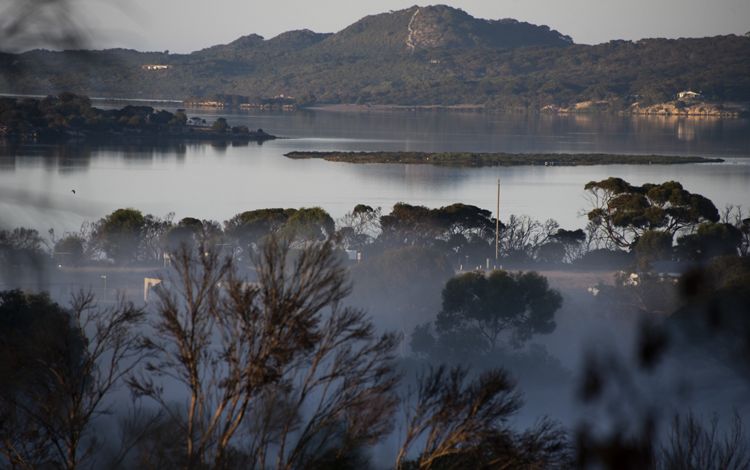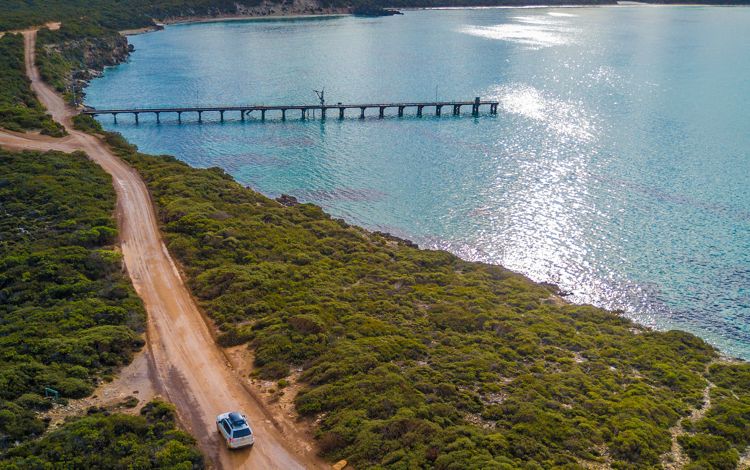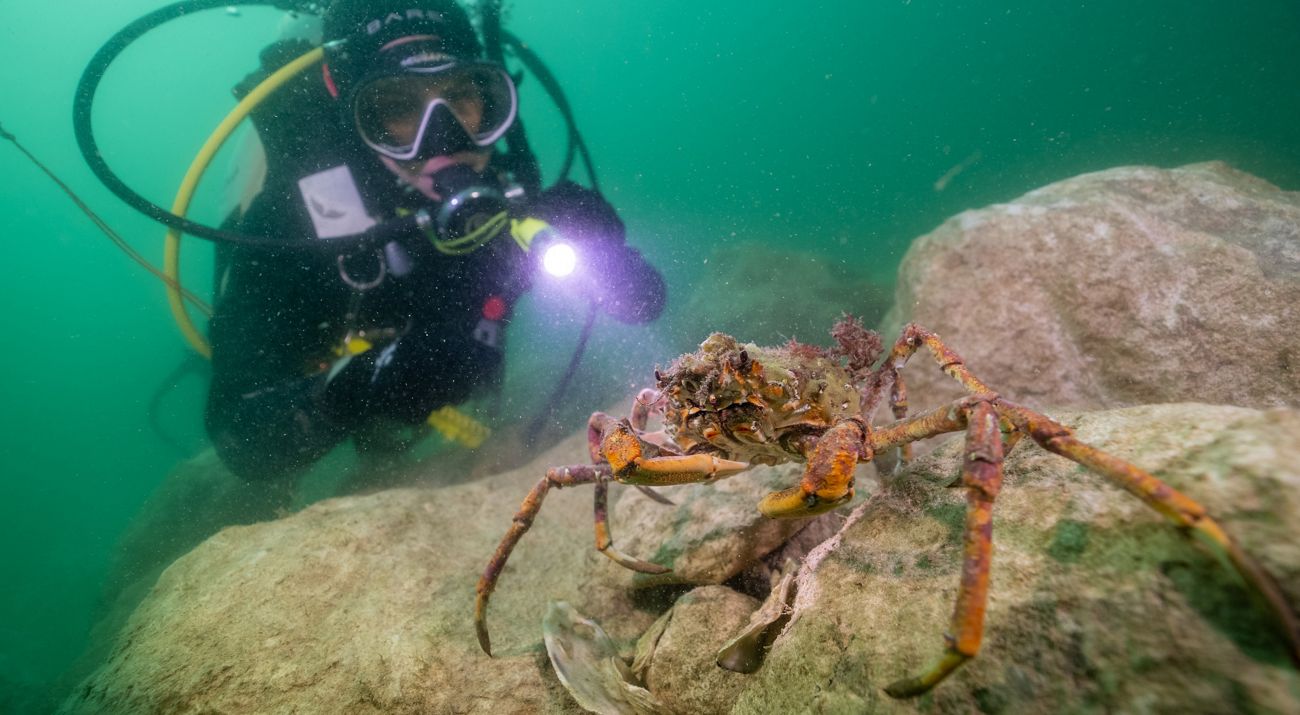Shellfish reef restoration at iconic Kangaroo Island
A Reef Builder project
Kangaroo Island is one of Australia’s most iconic places. It lies just 13km off the coast of South Australia and is famous for its natural landscapes.
The island, only accessible by sea or ferry, is a haven for nature. It is abundant in native bushland, pristine beaches and wildlife like dolphins and kangaroos. Its healthy marine environment is a central part of life on the island, with recreational fishing, beach walking, diving and swimming an essential part of the local lifestyle.
The history of Kangaroo Island's oyster reefs
Shellfish reefs once thrived across South Australia’s coastline including within the bays of Kangaroo Island. Today, these ecosystems are among the most endangered marine habitats on Earth—with 85% loss worldwide.
Oyster reefs fell into decline
South Australian waters were once teeming with shellfish reefs. At one point, these ecosystems were so abundant that they covered more than two thirds of the South Australian coastline.
In the 1800s, when Europeans settled in Australia, large amounts of oysters were harvested for food to support growing colonies.
In the early 1900s, oyster reefs were dredged as a source of lime and construction materials to form the foundations of city infrastructure such as bricks and concrete.
Over time, urban and agricultural runoff flowing into Adelaide’s coasts reduced water quality and clarity. With extensive development, South Australia’s coastline has experienced significant environmental degradation.
Reef Builder and Kangaroo Island
Kangaroo Island is regularly impacted by bushfires during summer. The 2019/20 summer bushfires were the largest in its recorded history. This had a major impact on the local community and the island's precious habitat and wildlife. By the time it was safe at the beginning of February 2020, about half of the island’s surface had been affected.
Reef Builder was a partnership between The Nature Conservancy Australia and the Australian Government. It aimed to bring back shellfish reefs from the brink of extinction while supporting the economic recovery of communities impacted by bushfires and Covid 19.
As part of Reef Builder, TNC worked with the local community on the restoration of what is Kangaroo Island’s largest native oyster reef. The aim of the work was to reintroduce suitable habitat for oysters, restore the myriad of benefits reefs provide and, support the recovery of the island's nature-based visitor economy after the devasting bushfires in 2019.
Beyond their culinary allure, oysters hold a significant place in the island's identify, supporting local economies through aquaculture while enhancing marine biodiversity and fishing opportunities.
Bringing the shellfish reefs back
The Kangaroo Island Reef Builder restoration project was delivered with support from the South Australian Department for Environment and Water (DEW).
The project's inception in 2021 involved careful planning, guided by insights from esteemed scientists at the Kangaroo Island Landscapes Board, University of Adelaide, and DEW. Through consultations with the local community, oyster farmers, The Kangaroo Island Council and other key stakeholders, we identified two suitable locations within Nepean Bay for restoration. After careful consideration, a final site, located 4 kilometres offshore from the township of American River and adjacent to the significant marine sanctuary at Pelican Lagoon, was selected.
Engineers played a pivotal role in designing 28 reef units tailored to the island's hydrodynamic conditions. These reefs were made from a combination of limestone boulders and recycled oyster shells seeded with juvenile oyster spat. Following development approval from the South Australian Government, site setup commenced by our construction contractor, Polaris Marine, at the American River Jetty wharf on January 28, 2023, marking a significant milestone in the project's progression.
The engagement of a nearby limestone quarry facilitated the supply and transport of reef materials, while recycled shells sourced from Pt Lincoln were cleaned by dedicated community volunteers and prepared for seeding at the South Australia Research and Development Institute SA hatchery.
On March 24, 2023, the final limestone reefs were completed, which was immediately followed by the dispersal of over 3.5 million oyster spat on shell by local commercial divers. The diverse size of the boulders has created a natural looking reef with a wide variety of habitat niches for marine life.
The invaluable support and involvement of local businesses on the American River Wharf and pioneering efforts by oyster farmers, such as KI Shellfish, in assisting us in trialling Australia's first remote-set of oyster spat on shell, have been integral to the project's success.
Together, we have not only restored critical habitats but also instilled a renewed sense of hope among Kangaroo Island's residents, showcasing the broader impacts of these projects.
MEDIA GALLERY:



The reefs are coming back to life
Within a short period of time, marine life was observed on the newly constructed reefs including oysters, crabs and fish. Within the first year, we have measured around 150 oysters per metre square surviving on the reefs and schools of juvenile Snapper. The most common fish observed on the reefs are schools of Sand flathead (Platycephalus bassensis), Silverbelly (Parequula melbournensis), Southern goatfish (Upeneichthys vlamingii).
It doesn't stop here
Whilst the monitoring frequency naturally changes as the restored reef bases become settled, the reefs are still monitored for changes. Monitoring at Kangaroo Island has involved pre-construction marine biodiversity and abundance surveys in spring 2022, oyster density counts immediately after construction followed by a repeat marine biodiversity and abundance survey again 8 months after reef construction in Spring 2023 to monitor changes. Our research partners, Flinders University will survey the reefs again in Spring 2024 using Remove underwater Video cameras.
For more information on the achievements of the Reef Builder initiative, read the 2024 Reef Builder Final Summary report.
Read more:
